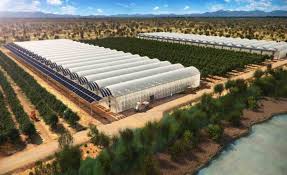
Breaking News
 Grand Theft World Podcast 257 | Foreign Affairs with guest Ernest Hancock
Grand Theft World Podcast 257 | Foreign Affairs with guest Ernest Hancock
 You've Never Seen Tech Like This
You've Never Seen Tech Like This
 Supreme Court Won't Exempt California Schoolchild From Vaccination Mandate
Supreme Court Won't Exempt California Schoolchild From Vaccination Mandate
 Visualizing the abundance of elements in the Earth's crust
Visualizing the abundance of elements in the Earth's crust
Top Tech News
 3D Printed Aluminum Alloy Sets Strength Record on Path to Lighter Aircraft Systems
3D Printed Aluminum Alloy Sets Strength Record on Path to Lighter Aircraft Systems
 Big Brother just got an upgrade.
Big Brother just got an upgrade.
SEMI-NEWS/SEMI-SATIRE: October 12, 2025 Edition
 Stem Cell Breakthrough for People with Parkinson's
Stem Cell Breakthrough for People with Parkinson's
 Linux Will Work For You. Time to Dump Windows 10. And Don't Bother with Windows 11
Linux Will Work For You. Time to Dump Windows 10. And Don't Bother with Windows 11
 XAI Using $18 Billion to Get 300,000 More Nvidia B200 Chips
XAI Using $18 Billion to Get 300,000 More Nvidia B200 Chips
 Immortal Monkeys? Not Quite, But Scientists Just Reversed Aging With 'Super' Stem Cells
Immortal Monkeys? Not Quite, But Scientists Just Reversed Aging With 'Super' Stem Cells
 ICE To Buy Tool That Tracks Locations Of Hundreds Of Millions Of Phones Every Day
ICE To Buy Tool That Tracks Locations Of Hundreds Of Millions Of Phones Every Day
 Yixiang 16kWh Battery For $1,920!? New Design!
Yixiang 16kWh Battery For $1,920!? New Design!
 Find a COMPATIBLE Linux Computer for $200+: Roadmap to Linux. Part 1
Find a COMPATIBLE Linux Computer for $200+: Roadmap to Linux. Part 1
Drought-Proof 'Cooling Houses' Use Saltwater and Cardboard to Grow Tons of...

Saltwater and dry desert climates may not seem like a good recipe for growing healthy produce, but that is exactly what a group of scientists has managed to do.
Researchers from the UK-based Seawater Greenhouse company have discovered a drought-proof way to farm fruits and vegetables simply by using solar power and saltwater for irrigation and cooling.
The company has launched plantation projects in arid regions such as Australia, Abu Dhabi, Somaliland, Oman, and Tenerife. Despite the harsh climate of these locations, the plantations are able to grow thousands of pounds of produce simply by making "cooling houses" out of thick walls of dampened cardboard.
While glass greenhouses are designed to keep gardens moist and warm, the cardboard structures use "evaporative cooling" to keep the interior of the plantation structures humid and cool.
The design of the corrugated cardboard panels helps to cool down the wind coming from the outside of the structure. At the same time, a small solar-powered pump dispenses seawater at the top of the panels so that it can trickle down through the walls of the cardboard for evaporation.
This "evaporative cooling" technique creates the perfect conditions for farming produce in drought-stricken regions.



